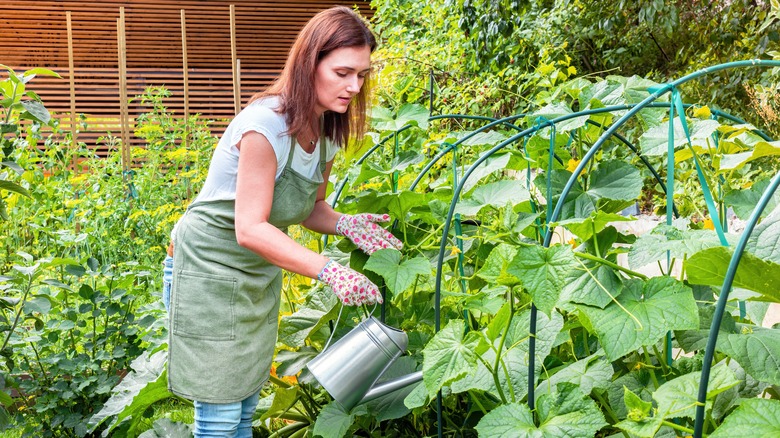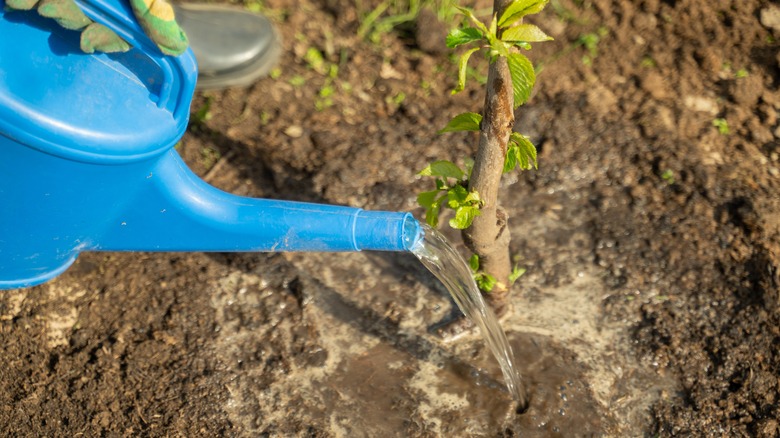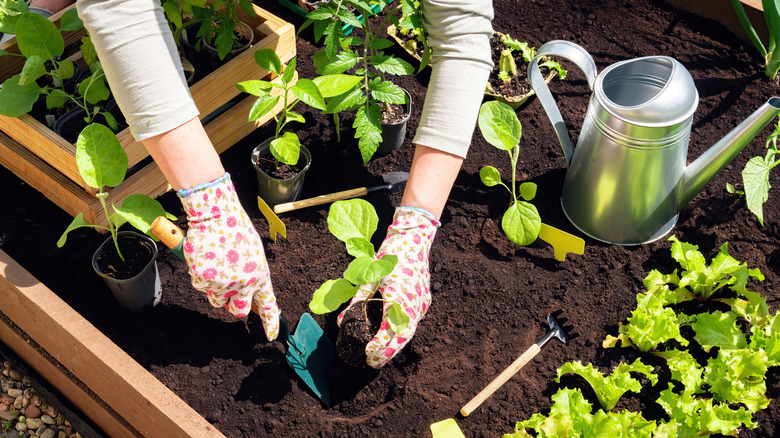The 3-Second Rule That Takes The Guesswork Out Of Watering Plants
The common adage, "Give your plants an inch of water per week," may sound good, but it's not always true. Plants have differing needs when it comes to water. Those that don't have established root systems yet are more reliant on gardeners for their moisture needs and may need daily watering if the weather is sunny and hot, while larger, more established trees and shrubs could likely go weeks without supplemental water during dry spells because they have access to deeper reserves of soil moisture from their wider root systems.
Slow and thoughtful hydration is the answer. The key is to not over-saturate on any given day; instead, let the soil dry out slightly before giving it another drink — one metaphorical sip of water at a time. But how can you really know if your plant is getting enough hydration? This simple rule is a good place to start.
How to use the 3-second rule
One great way to ensure your plants remain healthy and vibrant is by following the three-second rule. When watering, give your plants a thorough soaking around their base until a puddle begins to form. The puddle should remain unabsorbed for at least three seconds — this means the plant has enough water to keep it hydrated without risking rot or disease due to over-saturation. If it takes less than three seconds for the H2O to soak in, then your green friends need more hydration. This is also known as the "puddling method," and it not only ensures optimal watering practices but also helps keep nature happy by preventing over-watering and environmental waste.
This trick also steers gardeners clear of frequent, light sprinkling, which tends to make roots congregate near the surface, where they're susceptible to drying up quickly — it's an overall win-win for your flowers.
Knowing the soil type is important
If the soil is dry 1 or 2 inches deep, it's time to water those plants. The type of soil you use plays a role in how often you should be watering your plants too. Sandy soils (which contain large particles) don't store water well, so they need more frequent watering than heavier clay soils (which contain smaller particles). The weather also influences how often you should check in on your garden, with hotter temperatures requiring more frequent watering than cooler temperatures. Similarly, as the seasons change, so do our plants' water requirements; most plants are actively growing during spring and summer, which means they need regular irrigation to keep them healthy throughout the season. During fall and winter, many types of plants enter dormancy which means they require less maintenance watering since they're not actively growing.
When it comes down to it there are multiple factors to consider when it comes to figuring out how much water your garden needs — but the three-second rule is a good place to start so your plants can stay happy and hydrated all season long.


